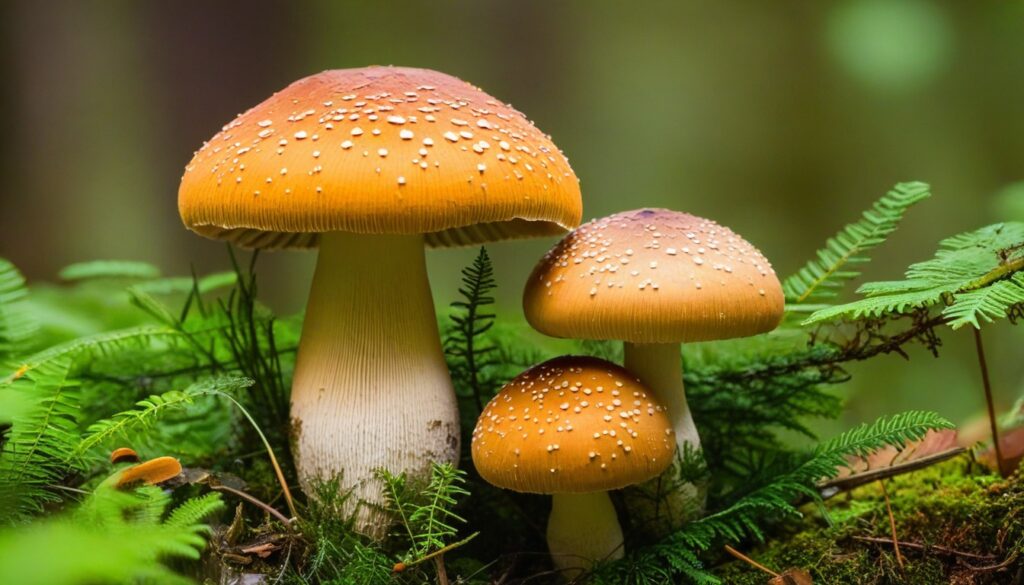If you’re a food lover and a nature enthusiast, you’d be fascinated by the world of edible wild mushrooms in Maryland. With its diverse mushroom species and breathtaking landscapes, the state is a haven for foragers seeking to connect with nature and explore the culinary delights of foraged mushrooms.
In this comprehensive guide, we’ll take you on a journey of discovery through Maryland’s mushroom ecosystem, providing you with the knowledge and skills needed to safely and sustainably forage for wild mushrooms in the state.
Get ready to uncover the secrets of the forest, identify different varieties of edible mushrooms, and learn the best practices for harvesting, preparing, and cooking these delectable treasures of nature.
Key Takeaways
- Edible wild mushrooms in Maryland are abundant and offer a diverse range of flavors and textures.
- Foraging for mushrooms in Maryland can be a fun and rewarding experience for nature enthusiasts and food lovers alike.
- Understanding the local mushroom ecosystem and practicing safe foraging techniques is crucial for a successful and sustainable foraging experience.
- There are many hotspots and locations in Maryland where you can find edible wild mushrooms, including state parks, forests, and private lands.
- By joining local foraging communities and attending mushroom-related events, you can connect with like-minded individuals and deepen your knowledge of mushroom foraging.
Why Forage for Edible Wild Mushrooms in Maryland
Foraging for edible wild mushrooms in Maryland is more than just a pastime. It offers numerous benefits for those who enjoy connecting with nature and exploring the diverse range of flavors and textures these delectable treasures of nature have to offer.
- Flavor: Freshly harvested mushrooms offer a unique and unparalleled burst of flavor that simply can’t be replicated by store-bought varieties.
- Nutrition: Edible mushrooms are packed with nutrients and antioxidants that boost the immune system and promote overall health and well-being.
- Cost-effective: Foraging is a cost-effective way to enjoy high-quality mushrooms without having to pay a premium price for them.
- Bonding with Nature: Foraging is a great way to connect with nature and appreciate the natural resources around us.
- Culinary Creativity: Edible wild mushrooms offer endless possibilities for culinary experimentation and creativity, allowing you to elevate your cooking game and explore new flavor combinations.
So why not embark on a foraging adventure in Maryland and experience the many benefits it has to offer?
Understanding Maryland’s Mushroom Ecosystem
Maryland’s mushroom ecosystem is unique and diverse, offering a plethora of edible mushroom species for foragers to discover. The state’s temperate climate, combined with its various forest types, creates ideal conditions for fungi to thrive.
Forest Types
Maryland’s forests can be broadly categorized as deciduous, coniferous, or mixed. Deciduous forests, prevalent in the eastern part of the state, are characterized by trees that shed their leaves annually. Coniferous forests, common in the western regions, have trees that bear cones and needle-like leaves. Mixed forests, as the name suggests, feature a combination of deciduous and coniferous trees.
Moisture Levels
Moisture is a key factor that determines the distribution of mushroom species in Maryland. Some species prefer damp environments, such as near creeks and streams, while others grow in dry or sandy soils.
Other Environmental Factors
Other environmental factors, such as temperature, light, and soil nutrients, also play a role in the growth and distribution of mushrooms. For example, morel mushrooms tend to grow in areas with burned or disturbed soil.
|
Common Edible Mushrooms in Maryland |
Preferred Habitat |
|---|---|
|
Morels |
Burned or disturbed soil |
|
Chanterelles |
Deciduous or mixed forests with high moisture levels |
|
Lion’s Mane |
Hardwood trees, particularly oak and beech |
|
Honey Mushrooms |
Dead or dying trees, stumps, or logs |
Understanding the mushroom ecosystem in Maryland is essential for identifying and harvesting edible mushrooms safely and sustainably. By taking into account the forest type, moisture levels, and other environmental factors, foragers can maximize their chances of finding and enjoying the delicious abundance of nature’s bounty.
Safety Measures and Best Practices
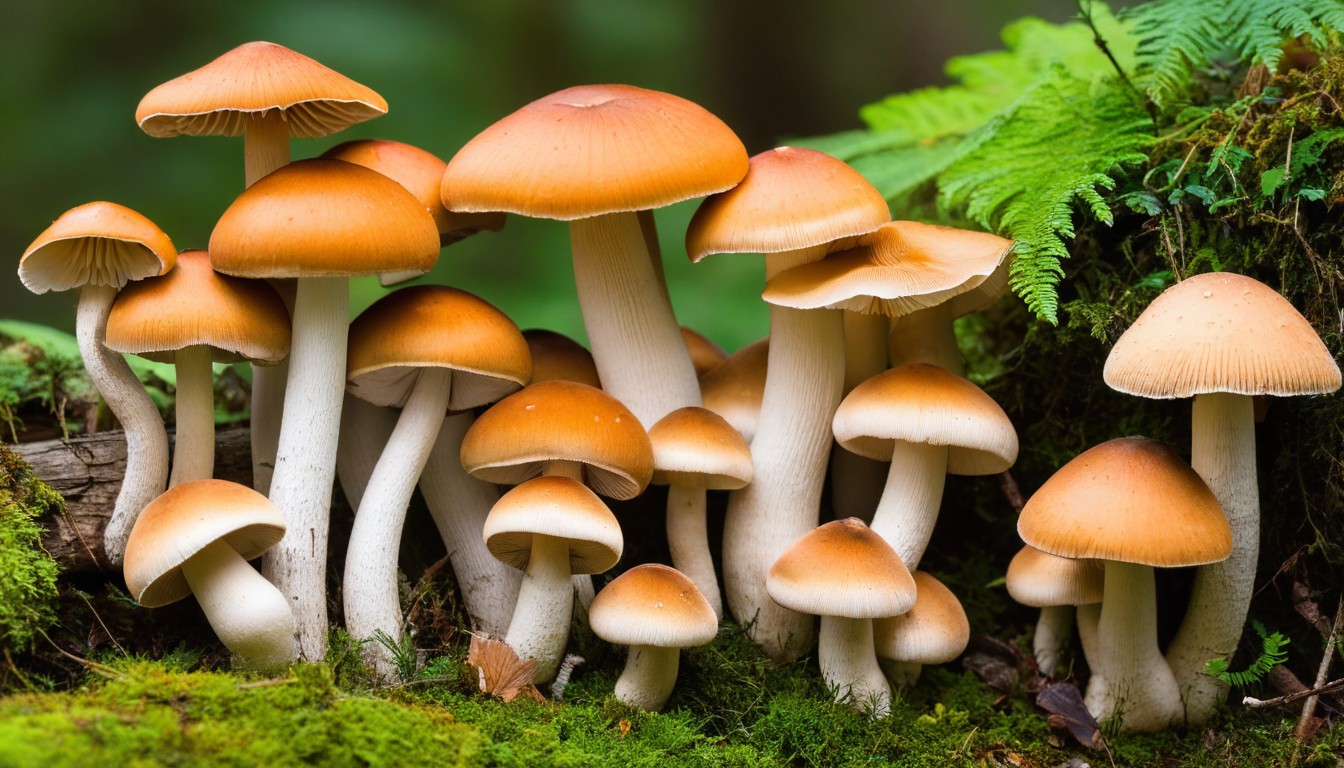
Foraging for mushrooms can be a fun and rewarding experience, but it’s important to take proper safety measures to ensure a risk-free adventure. Before you head out, arm yourself with the knowledge of best practices for mushroom identification and ethical considerations to protect both yourself and the environment.
Proper Mushroom Identification
One of the most critical aspects of safe foraging is proper mushroom identification. Accurately identifying mushrooms requires knowledge of their physical characteristics, including cap shape and color, stem size and texture, and spore print color.
It’s best to start by studying the most common edible wild mushrooms found in Maryland and becoming familiar with their distinguishing features. It’s also essential to stay up to date on any new discoveries or changes in mushroom classifications.
Safety Precautions
Foraging can come with potential hazards, including exposure to poisonous plants and wildlife, dangerous terrain, and inclement weather. It’s vital to take necessary precautions to minimize these risks and ensure your safety.
You should also bring a first aid kit, appropriate clothing, and enough water and food to sustain yourself. It’s also crucial to let someone know where you are going and when you plan to return.
Ethical Considerations
When foraging, it’s essential to follow ethical considerations to protect both yourself and the environment. Only take what you need, leaving behind enough to support the ecosystem’s health and future growth. Don’t damage the mushroom’s environment or unnecessarily disturb wildlife and plants.
It’s important to also avoid foraging in private lands without permission or in protected areas where foraging is prohibited. Ensure that you have the necessary permits and comply with regulations in the area you plan to forage in.
Popular Edible Wild Mushrooms in Maryland
Maryland is home to a variety of delicious edible wild mushrooms that foragers love to harvest. Below, we’ve listed some of the most popular species and their unique qualities.
|
Mushroom |
Distinctive Qualities |
Preferred Habitat |
|---|---|---|
|
Morels |
Distinctive honeycomb-shaped cap, meaty texture, and nutty flavor. |
Found in moist woodland areas, especially around trees like ash, tulip poplar, and oak. |
|
Chanterelles |
Bright yellow or orange cap, delicate texture, and a fruity, apricot-like flavor. |
Found in damp areas near hardwood trees like oak, beech, and hickory. |
|
Black Trumpets |
Velvety black cap, funnel shape, and an earthy, musky flavor. |
Commonly found under trees like oak, beech, birch, and maple. |
|
Lobster Mushrooms |
Bright orange-red, firm texture, and a sweet, seafood-like flavor. |
Typically found near oak and pine trees. |
|
Hen of the Woods |
Massive, frilly brown cap, firm texture, and a meaty, nutty flavor. |
Found at the base of oak trees or in deciduous forests. |
Remember to always practice safe and sustainable foraging by respecting the environment and following ethical guidelines. Happy hunting!
Harvesting and Preparation Tips
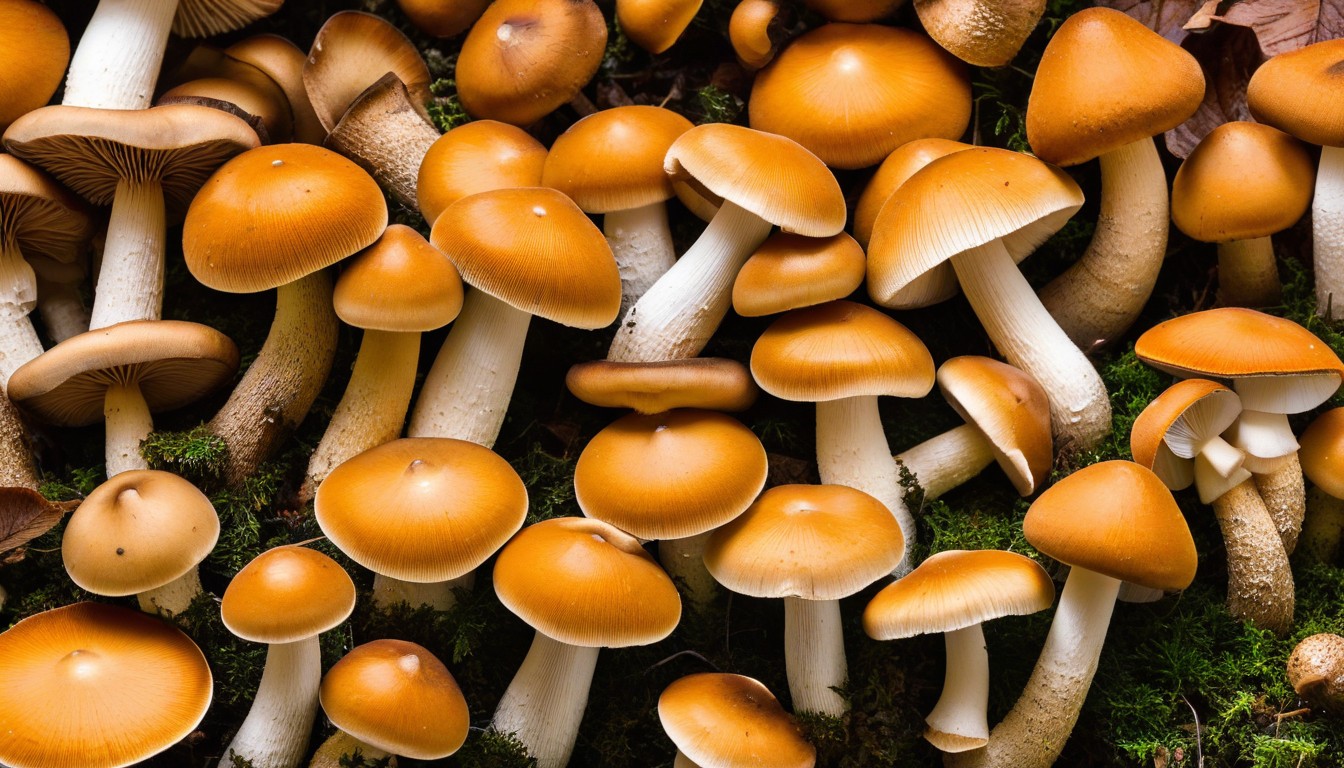
Harvesting and preparing edible wild mushrooms in Maryland can be a rewarding experience for any forager. However, safety should always be the top priority. Follow these best practices to ensure a positive and risk-free experience:
- Identify mushrooms accurately before harvesting. Look for unique characteristics like color, shape, size, and gills underneath the cap.
- Carry a mushroom knife or scissors to cut the mushroom at the base of the stem, leaving the root system in place. This allows the mushroom to grow back in the future.
- Don’t use plastic bags to store mushrooms. They can trap moisture and promote spoilage. Instead, use porous containers like paper bags or wicker baskets.
- Clean the mushrooms by brushing off any debris or insects with a soft brush or cloth. Avoid washing them with water, as they can absorb moisture and lose flavor.
- Store the mushrooms in a dry, cool place, away from direct sunlight or heat sources. They should last for up to a week.
Once you have harvested your mushrooms, it’s time to prepare them for cooking. Try them in a classic dish like sautéed mushrooms or incorporate them into a new recipe with these preparation tips:
- Start with a small quantity of mushrooms to test the flavor and texture.
- Use a non-stick skillet to cook the mushrooms. This will prevent them from sticking to the surface and ensure even cooking.
- Slice the mushrooms thinly to ensure they cook thoroughly and absorb the flavor of the ingredients.
- Season the mushrooms with salt, pepper, and other herbs or spices to enhance the natural flavors.
- Experiment with different preparation methods like grilling, roasting, or pickling.
With these helpful tips, you’ll be able to harvest and prepare edible wild mushrooms like a pro. Try these mouth-watering recipes featuring Maryland’s own morels, chanterelles, and black trumpets:
“Mushrooms have a way of making any dish better. They combine with bold and delicate flavors like no other ingredient, giving the final dish an earthiness that is simply magical.”
Where to Forage for Edible Mushrooms in Maryland
Foraging for edible wild mushrooms in Maryland has become increasingly popular among nature enthusiasts and food lovers alike. With its diverse mushroom ecosystem and abundant habitats, the state offers a plethora of prime locations and hotspots for mushroom hunting.
Some of the top areas for mushroom foraging in Maryland include:
|
Location |
Types of Mushrooms |
Note |
|---|---|---|
|
Green Ridge State Forest |
Morels, Chanterelles, Porcinis, Chicken of the woods, Hen of the woods, Black trumpets, and others |
A permit is required for foraging in state forests and parks |
|
Catoctin Mountain Park |
Hen of the woods, Chanterelles, Red-Belted Polypore, Yellow-Footed Chanterelle, Black Trumpets, and others |
Mushroom foraging is allowed in designated areas for personal use only |
|
Savage River State Forest |
Morels, Chanterelles, Trumpets, oysters, maitake, and others |
A permit is required to harvest mushrooms in the forest |
|
Cunningham Falls State Park |
Maitake, Hedgehogs, Chanterelles, and others |
Mushroom foraging is allowed in designated areas for personal use only |
|
Private lands and farms |
Variety of mushrooms |
Permission from the landowner is required for foraging on private lands |
It is important to note that regulations and permissions may vary from location to location and change over time, so always check with the park or landowner before heading out foraging. Respect the environment and harvest only what you need, ensuring that the mushrooms you forage are species that are safe to consume and follow sustainable foraging practices.
Tips for Sustainable Foraging
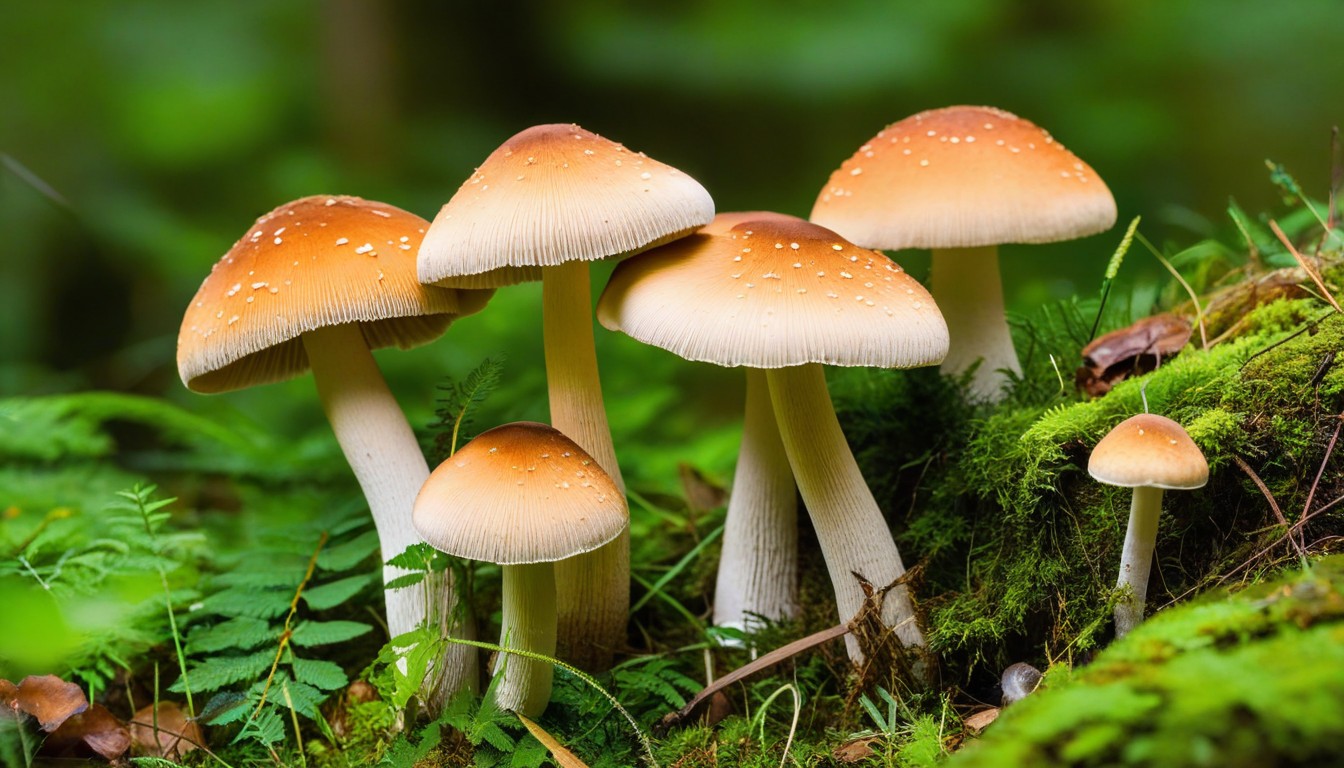
As foragers, it’s important to follow sustainable practices and help preserve the mushroom habitats for future generations. Here are some tips to minimize the environmental impact of your foraging activities:
- Leave no trace: When foraging, make sure to leave the area as you found it. Don’t disturb the ecosystem or damage the vegetation surrounding the mushrooms.
- Respect the regulations: Be aware of the regulations and permissions for foraging in different areas. National parks, private lands, and protected areas may have different rules and restrictions.
- Only take what you need: Avoid over-harvesting and taking more than what you’ll use. This ensures that others can enjoy the same bounty and prevents the depletion of the mushroom populations.
- Learn from experts: Join local foraging communities or attend workshops to learn from experts in the field. They can teach you about the best practices for sustainable foraging and mushroom conservation.
If you’re passionate about mushroom conservation, you can also get involved in organizations and initiatives dedicated to preserving the mushroom habitats in Maryland. Here are some reputable organizations you can support:
|
Organization Name |
Mission |
Website |
|---|---|---|
|
Chesapeake Bay Foundation |
To protect and restore the waters of the Chesapeake Bay through advocacy, education, and restoration programs. |
www.cbf.org |
|
Mid-Atlantic Mushroom Club |
To promote the enjoyment, study, and exchange of information about wild mushrooms. |
www.midatlanticmushroomclub.org |
|
Appalachian Mountain Club |
To promote the protection, enjoyment, and stewardship of the mountains, forests, waters, and trails of the Appalachian region. |
www.outdoors.org |
By following these tips and supporting the organizations that work towards preserving Maryland’s mushroom habitats, you can make a positive impact on the environment and contribute to a thriving foraging community.
Joining Local Foraging Communities and Events
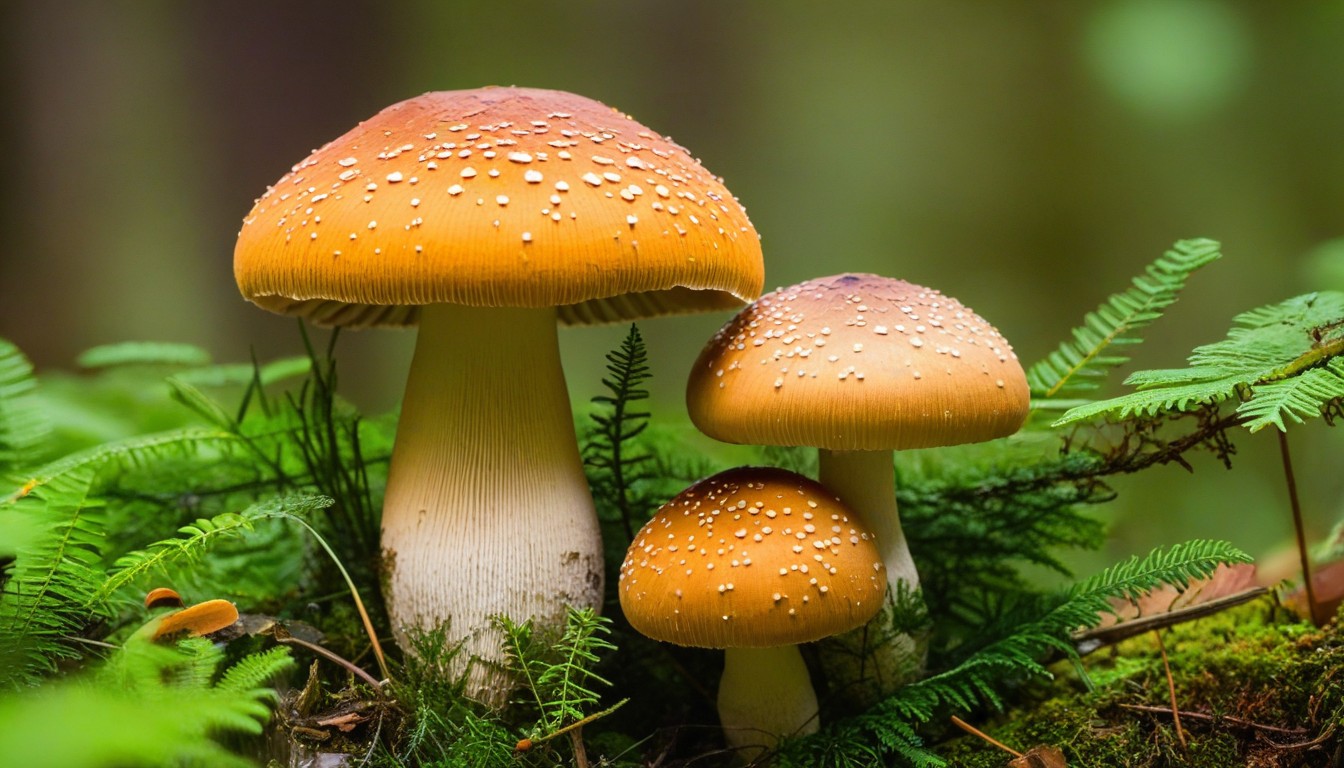
Foraging for edible wild mushrooms can be a fun and rewarding activity, but it’s even better when shared with others who share the same passion. By joining local foraging communities and participating in mushroom-related events in Maryland, you can connect with like-minded enthusiasts, learn from experienced foragers, and expand your knowledge about the world of mushrooms.
There are many local foraging groups in Maryland that organize events such as mushroom identification walks, guided forays, and workshops on topics such as mushroom cultivation and gourmet cooking with wild mushrooms. These events offer a great opportunity to meet new people, share experiences and knowledge, and learn about new mushroom species that you might not have discovered on your own.
Whether you’re a newbie to foraging or an experienced mushroom hunter, there’s always something new to learn from these events. And because they’re focused on mushrooms, you know you’ll be in the company of other like-minded enthusiasts who share your love of these fascinating organisms.
So, if you’re looking to expand your foraging skills and connect with others who share your passion for wild mushrooms, consider joining a local foraging community or attending one of the many mushroom-related events happening in Maryland.
Health Benefits and Culinary Delights
Edible wild mushrooms are not only delicious but also offer a range of health benefits. Many wild mushrooms are rich in vitamins and minerals, including vitamin D, potassium, and selenium. They also contain antioxidants and anti-inflammatory compounds that can boost immunity and reduce the risk of chronic diseases.
In Maryland, foragers can find a variety of wild mushroom species that are prized for their culinary qualities. From meaty boletes to delicate oysters, these mushrooms offer unique flavors and textures that can take any dish to the next level.
|
Mushroom |
Flavor Profile |
Best Used In |
|---|---|---|
|
Morels |
Earthy, nutty, and slightly smoky |
Soups, sauces, and pastas |
|
Chanterelles |
Fruity, apricot-like, and mildly peppery |
Risottos, stir-fries, and sautés |
|
Hen of the Woods |
Rich, nutty, and meaty |
Grilled, roasted, and braised dishes |
|
Maitake |
Earthy, spicy, and slightly sweet |
Stir-fries, curries, and frittatas |
In addition to the unique flavors they offer, wild mushrooms can be a healthier alternative to processed ingredients in many recipes. They can add an umami-rich punch to vegetarian and vegan dishes, and are an excellent way to incorporate more plant-based nutrition into your diet.
Whether you’re a seasoned chef or a novice cook, foraging for edible wild mushrooms in Maryland is an exciting and rewarding experience. Not only can you enjoy the culinary treasures of nature, but also reap the many health benefits that these mushrooms have to offer.
Conclusion
As we conclude our foraging journey through the world of edible wild mushrooms in Maryland, we hope you have gained valuable insights into this fascinating pastime. From the joys of connecting with nature to the endless culinary possibilities, foraging for mushrooms is a rewarding activity that can enhance your well-being in many ways.
Remember to always prioritize safety and sustainability when foraging, and to respect the natural environment and the habitats of the mushrooms we gather. By following best practices and joining local communities and initiatives, we can ensure the preservation of these natural treasures for generations to come.
So, next time you’re out in the woods, take a closer look at what’s growing around you. Who knows, you might just discover a delectable gourmet treat that will surprise and delight you, and broaden your appreciation for the wonders of nature in Maryland.
FAQ
Are all wild mushrooms in Maryland edible?
No, not all wild mushrooms in Maryland are edible. There are many toxic and poisonous varieties that can cause illness or even be fatal if consumed. It is essential to have proper knowledge and identification skills before foraging and consuming wild mushrooms.
How do I identify edible wild mushrooms in Maryland?
Identifying edible wild mushrooms requires expertise and experience. It is recommended to join foraging workshops or consult with local mycological societies to learn about different species, their distinguishing features, and potential look-alikes. Always cross-reference multiple reliable identification resources before consuming any wild mushrooms.
Can I forage for mushrooms in any forest or park in Maryland?
Foraging regulations vary depending on the specific forest or park in Maryland. Some areas may have restrictions or require permits for mushroom foraging. It is crucial to research and adhere to the rules and guidelines set by the managing authorities of the respective locations.
What is the best time to forage for edible wild mushrooms in Maryland?
The best time to forage for edible wild mushrooms in Maryland is typically in the spring and fall seasons when conditions are favorable for their growth. However, specific mushroom species may have different fruiting periods, so it is essential to research and understand the life cycle of the mushrooms you intend to forage.
Can I eat wild mushrooms raw?
It is generally not advisable to consume wild mushrooms raw. Cooking mushrooms helps break down their indigestible compounds and potential toxins, making them safer to eat. Always cook wild mushrooms thoroughly to ensure their safety and enhance their flavors.

